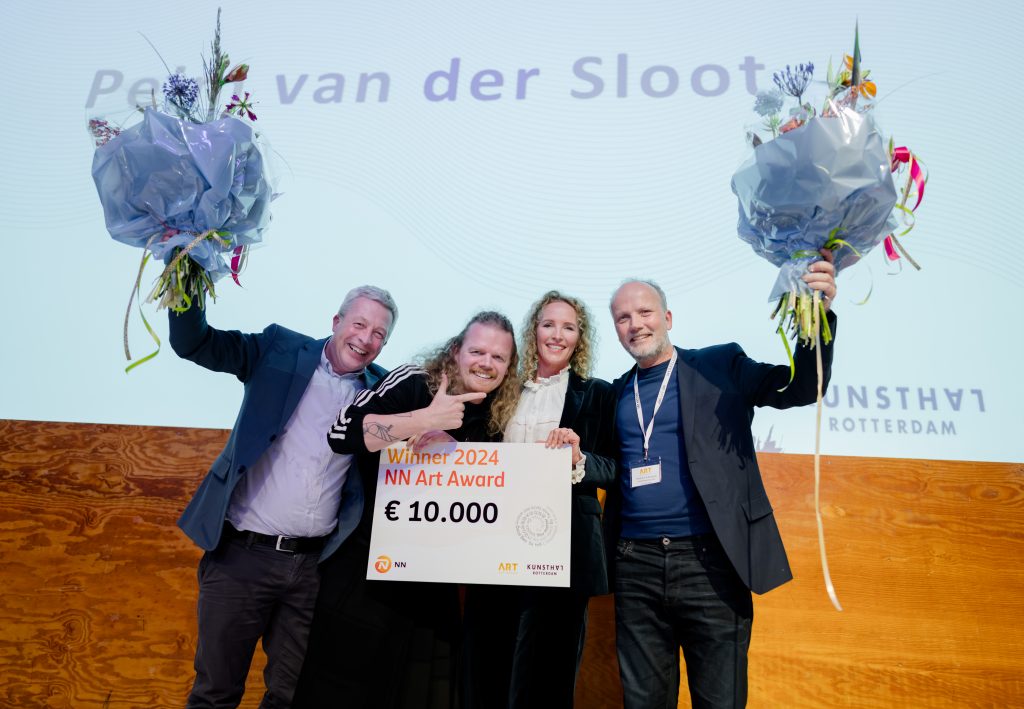
Coming soon
Coming soon
Select type
During Art Rotterdam 2025, the NN Art Award will be presented for the ninth time. This prize celebrates talented artists who have graduated from a Dutch institution and are showcasing their work at the fair. The award not only offers recognition but also supports artists in developing and presenting their practice. The winner of the NN Art Award will be announced during the festive award ceremony in Kunsthal Rotterdam on Friday, March 28, 2025 at 20:00 hours; work by all nominees will be on display here until May 11.

A partnership with impact
Since 2017, Nationale-Nederlanden (part of NN Group) has partnered with Art Rotterdam, presenting an annual award to outstanding contemporary art talent with an innovative and authentic artistic voice. The selected works often address societal themes and demonstrate remarkable technical execution. The award is not limited to emerging talent but also recognises artists who are further along in their careers. With multidisciplinary selection criteria, all media types are eligible to be included in the NN Art Award.
A springboard for artists
The winner will receive €10.000, intended to further develop their practice and reach a wider audience. Also this year, the nominees will have the unique opportunity to exhibit their work at Kunsthal Rotterdam. The exhibition will run from 15 March to 11 May 2025. Last year, more than 110.000 people visited the exhibition. Also, all four nominees will be featured in an article on GalleryViewer.com. In addition, Nationale-Nederlanden purchases work from one or more of the nominees for its corporate collection.
Spotlight on talent and excellence in education
The NN Art Award underscores the exceptional quality of art education in the Netherlands. Artists from around the world are drawn to prestigious institutions such as the Rijksakademie, De Ateliers, the Jan van Eyck Academie and the Piet Zwart Institute.
Looking back on 2024
Last year’s award went to Peim van der Sloot, represented by Brinkman & Bergsma. Van der Sloot reflected: “Winning the NN Art Award in 2024 was a surprising and fantastic start to the year. It allowed me to deepen my practice by creating new work, which I was able to present on international stages, including an art fair in Los Angeles. I am incredibly grateful for these opportunities; it was undoubtedly one of the highlights of my year. I also had the time to explore certain themes more deeply, such as my new series paying homage to pointillism. These works, inspired by light and nature in Amsterdam, will be on view in a solo exhibition at Huize Frankendael from February onwards. We will organise a special tour and dinner for GalleryViewer readers, and everyone is welcome to join.”
The jury and selection
Each year, a rotating jury of art professionals selects four nominees and ultimately chooses the winner. The jury combines various disciplines including art journalists, curators, museum directors, artists, collectors and the curator of the NN Art Collection.
This year’s jury consists of:
• Marianne Splint, Director of Kunsthal Rotterdam
• Peim van der Sloot, artist and winner of the NN Art Award 2024
• Nadine van den Bosch, curator, author, and co-founder and director of Young Collectors Circle
• Miluska van ’t Lam, Editor-in-Chief of Harper’s Bazaar
• Maartje de Roy van Zuydewijn, curator of the NN Art Collection
Galleries who exhibit at the fair can nominate artists for the award. Additionally, the curator of the Prospects section of the Mondriaan Fund will also submit five proposals this year, selecting the most promising talent featured in the exhibition. The four nominees for the NN Art Award 2025 will be announced mid February.
Festive award ceremony at Kunsthal Rotterdam
The winner of the NN Art Award will be announced during the festive award ceremony in Kunsthal Rotterdam on Friday, March 28, 2025 at 20:00 CET. During this festive evening, all exhibitions, including the NN Art Award exhibition, can be viewed freely by the guests present.
About Nationale-Nederlanden
Nationale-Nederlanden (part of NN Group) is an international financial services provider with a long-standing tradition of supporting art and culture.
At Art Rotterdam, taking place from 28 to 30 March 2025 at Rotterdam Ahoy, Prats Nogueras Blanchard from Madrid and Barcelona will present the work of Mercedes Azpilicueta. Her work will be shown in the New Art Section, curated by Övül Ö. Durmuşoğlu. Azpilicueta is fascinated by unheard voices and explores how art can contribute to rewriting history from a decolonial and feminist perspective. For Azpilicueta, history is anything but singular: she interweaves the stories of feminist icons, queer individuals, exiles and migrants — figures often overlooked in mainstream historiography — into complex and multidimensional installations. In doing so, she examines the subjectivity of language, history, narratives and objects, questioning their established meanings.
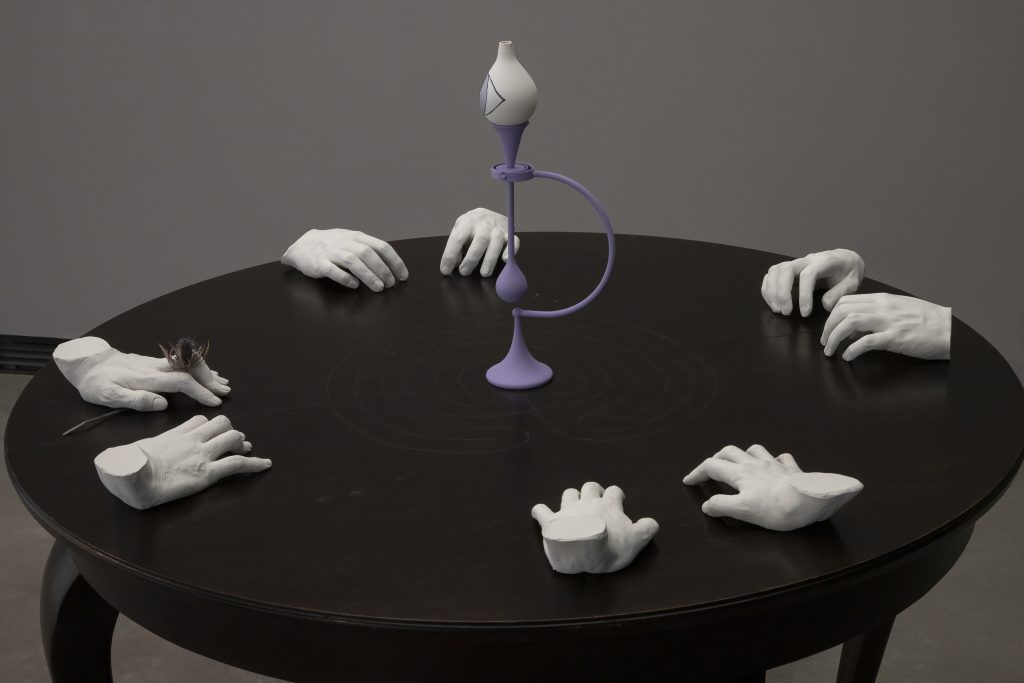
Azpilicueta’s multidisciplinary practice spans textiles, sculpture, video, sound, drawings and performance. Textiles hold a central place in Azpilicueta’s practice, where she seamlessly blends traditional techniques like embroidery and weaving with contemporary production methods. That way, she revalues traditional forms of female labour and overlooked knowledge while investigating the impact of power structures on personal narratives. Her Jacquard tapestries feature layered compositions of historical and contemporary imagery, text fragments and abstract forms. At times, she presents these tapestries as sculptures, blurring the boundaries between artistic disciplines.
Her approach is deeply rooted in research. Azpilicueta describes herself as a “dishonest researcher,” freely navigating between art history, popular culture, mythology, literature, protest cultures, street culture and personal memories. Azpilicueta also draws inspiration from speculative and fictional Latin American literature, in which alternative realities, future visions and magical realism play a key role. Baroque art, brought to Latin America through colonisation and merged with local traditions, also plays an essential role in her practice. Additionally, the artist is drawn to older forms of knowledge that has been primarily passed down through women, but has often been marginalised by the rise of religion, capitalism and modern medicine. Rather than pursuing a linear reconstruction, Azpilicueta engages in a process of recomposition, where historical facts, fiction, and personal memories seamlessly blend together. In this way, she brings together a wealth of voices, time periods and materials.
Recurring themes in her work include decolonialism, feminism and gender, diaspora and displacement, and the tension between the personal and the collective body. Her associative practice dismantles entrenched historical narratives, creating space for new perspectives. These perspectives are affective, emphasising emotion, bodily experiences and sensory perception as ways to understand and interpret the world. Azpilicueta acknowledges that human experiences are shaped not only by rational or intellectual processes but also by feelings such as empathy, longing, pain and connection. At the same time, her work offers a dissident perspective that challenges dominant views, structures and power dynamics. This form of resistance finds its roots in feminist, decolonial and queer theories, striving to carve out space for alternative narratives, identities and forms of knowledge that fall outside the established discourse. In her work, these two perspectives converge and Azpilicueta offers us alternative ways of understanding and experiencing history. Reflecting on her exhibition at the Fries Museum, the artist stated: “[I] approach history as something multiple, collective, and fluid — something that is never definite but is constantly being rewritten, retold, shared and even contested.

This approach is beautifully reflected in the tapestry “The Captive: Here’s a Heart for Every Fate”, that is part of the Van Abbemuseum collection. Inspired by the 19th-century retelling of the legend of Lucía Miranda by Argentine writer Eduarda Mansilla, the piece challenges the original colonial narrative. In the traditional myth, Lucía is portrayed as a passive ‘cautiva,’ a European woman captured by the local Argentine population in the 16th century and ultimately ‘rescued’ by the colonisers. Mansilla subverts this narrative by giving Lucía an active role, while allowing space for her feelings and desires. She highlights the solidarity Lucía builds with the women she lives with, exchanging knowledge and developing their own language. This perspective humanises the Argentine population, showcasing their strength and pursuit of independence without reducing Lucía to a victim. For this work, Azpilicueta drew inspiration from the intricate patterns of 19th-century costumes and corsets. Additionally, the work references a painting by Argentine artist Ángel Della Valle from the same period, but she deliberately reverses gender roles in some cases. Azpilicueta also reinterprets a painting by Uruguayan artist Juan Manuel Blanes, where the allegorical contrast between the ‘barbaric’ and the ‘civilised’ is visually explored. Azpilicueta raises critical questions about these constructed dichotomies and the colonial ideologies underlying them.
Azpilicueta’s research for other works extends to the construction of masculinity in colonial New Spain, the aesthetics of bondage culture. She also delves into the role of women in Baroque gardens, street slang and historical events such as the women-led ‘Potato Riots’ of 1917 in Amsterdam. Historical figures, such as the lieutenant nun Catalina de Erauso, who escaped a Basque convent disguised as a man in 1599 and pursued a military career in Spanish America, also serve as significant sources of inspiration in her work.
The artist describes the formation of her woven artworks as an open-ended choreography, with compositions continuously being adapted and refined — first on paper, then on the computer, and finally on a weaving loom. The final work often deviates from the original concept. In an interview with Voice Mag, she described working with Jacquard tapestries as “painting with threads,” using up to twelve colours of yarn to achieve a rich palette of 125 hues.
The materials Azpilicueta uses carry their own stories and histories. In her installations, she weaves textiles, ceramics, latex, leather and wax with objects that reference ‘female’ labour and subaltern knowledge — forms of knowledge that have long been marginalised, undervalued or suppressed within dominant power structures and institutions. Azpilicueta embraces techniques such as embroidery, sewing and quilting — traditionally associated with domestic and craft-based knowledge — and repositions them in a contemporary context. In doing so, she challenges institutional hierarchies and advocates for a renewed appreciation of these practices, which are at risk of being lost. By combining artisanal and industrial techniques, she explores how tradition and innovation can coexist and reinforce each other. Azpilicueta’s practice is characterised by collaborations with artisans, performers and researchers, with her textile works often produced in specialised studios such as the TextielLab in Tilburg.
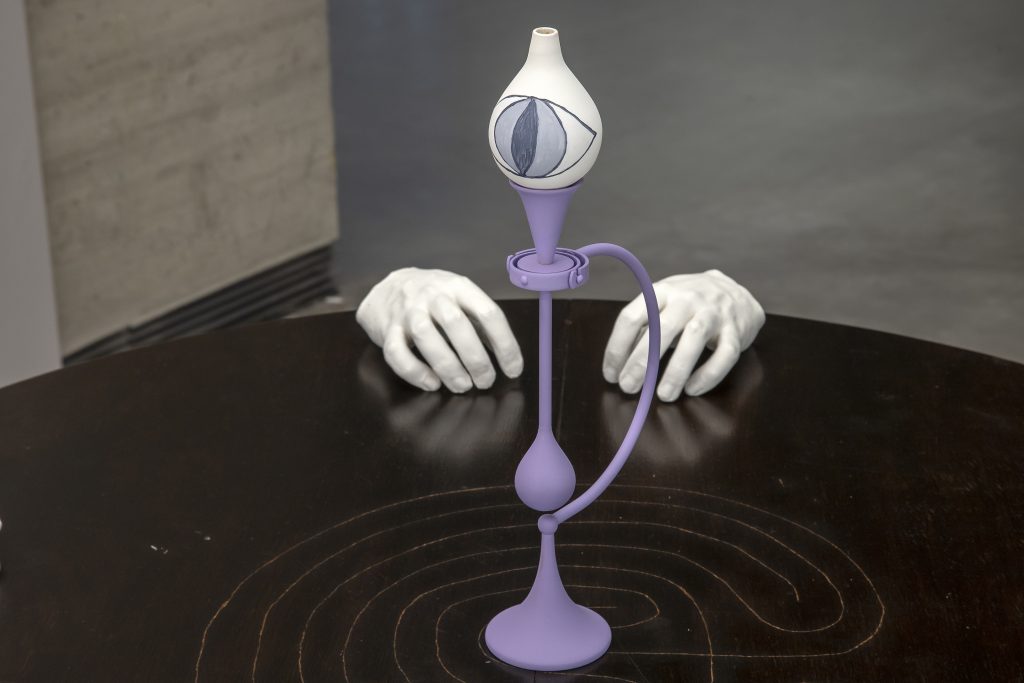
Azpilicueta also draws inspiration from new materialist theories, which emphasise the active role of matter and materiality in shaping the world. In her work, this translates into a thoughtful engagement with materials and techniques that serve not merely as tools but as active, dynamic elements within her practice. This approach invites viewers to perceive materials not just as carriers of meaning but as mutable entities that influence our understanding of both past and present. Azpilicueta works with recycled and natural materials, which add an additional layer of meaning to her objects. These materials bear traces of their form and use, while also pointing to broader themes such as the circulation of resources and the transmission of knowledge — topics often closely intertwined with the exploitation of people and nature.
Azpilicueta’s presentation at Art Rotterdam includes the installation “La Fuerza Colectiva”, in which a theatrical table with sculptural elements interacts with both space and viewer. Surrounded by plaster hands, the table evokes associations with a spiritual or ceremonial gathering, such as séances or rituals centered around female bodies and shared experiences. The decorative motifs on the tabletop and the vase with an eye motif allude to rituals of female knowledge transmission and collective memory, drawing inspiration from the work of Amalia Domingo Soler, a 19th-century writer, activist and spiritist. These elements reappear in the large-scale Jacquard tapestry “Las Mesas Danzantes”, a dynamic visual collage featuring floating objects such as chairs and tables. The tapestry incorporates spiritual and abstract drawings and paintings that were created by Azpilicueta in her early 20s in Buenos Aires, adding a deeply personal layer to the work. It also references the pioneering 19th-century abstract artist Georgiana Houghton, whose exploration of abstraction actually predates Kandinsky — who is traditionally considered the ‘creator’ of abstract painting. Furthermore, abstraction and spiritism have been closely linked from their inception, for instance in the work of Hilma af Klint. It’s a connection that Azpilicueta explores through contrasting styles and techniques, merging historical prints with delicate hand-drawn and abstract shapes. The resulting work creates a temporary, almost dreamlike space in which the viewer moves between past and present, reality and fiction.
Mercedes Azpilicueta was born in 1981 in La Plata, Argentina, and has been living and working in the Netherlands for several years. She studied at the Universidad Nacional de las Artes in Buenos Aires and earned her Master’s degree at the Dutch Art Institute/ArtEZ in Arnhem. In 2015-2016, she was an artist-in-residence at the prestigious Rijksakademie van Beeldende Kunsten in Amsterdam. Her work has been exhibited in institutions such as the Van Abbemuseum, the Stedelijk Museum, the Fries Museum, the Barbican Centre and Gasworks in London, IMMA in Dublin, the Museo de Arte Moderno de Buenos Aires, CentroCentro in Madrid, Kunstverein Göttingen and during the Busan Biennale. In 2021, Azpilicueta was nominated for the Prix de Rome, and in 2017 she received the Pernod Ricard Fellowship.
The work of Mercedes Azpilicueta will be featured at Art Rotterdam in the New Art Section, presented by Prats Nogueras Blanchard from Madrid and Barcelona.
Written by Flor Linckens
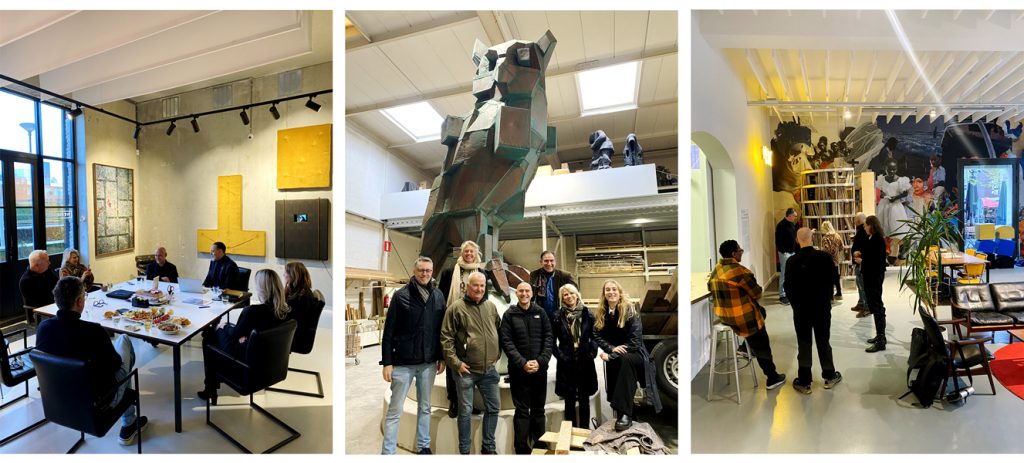
With a new location in prospect -Ahoy Rotterdam- Art Rotterdam also welcomes a new main sponsor: DHB Bank. To introduce our new partner to the Rotterdam art scene, a city trip for DHB was planned last November 19, with visits to Kunstinstituut Melly, Brutus, Atelier Van Lieshout, Roof-A Gallery and Galerie Weisbard. Both Manuela and Pienk, VIP managers of Art Rotterdam, and Mustafa Beker, Head of Art Finance and Business Devolopment DHB Bank and MarCom team DHB Bank: Folkert Oosting and Martijn Blom were impressed by the hospitable receptions at the various locations, the interesting conversations and the diverse exhibition programs. It is clear that both Team Art Rotterdam and Team DHB are looking forward to the upcoming edition in Ahoy and the Art Rotterdam VIP program in the city.

Okan Balköse, CEO of DHB Bank, shares why the bank is the main sponsor: “As a bank with deep roots in the city, we are proud of our partnership for the 26th edition of Art Rotterdam at Ahoy. Our support reflects our belief in the importance of keeping art accessible to everyone. Contemporary art challenges us to see the future differently, just as savings opens the door to new possibilities and space to look ahead.”
DHB Bank is a Dutch savings bank where you can save online. Its headquarters have been located in Rotterdam for over 30 years.
Over the years, the city has become its home base, which is why DHB Bank is the proud main sponsor of Art Rotterdam.
During Art Rotterdam, for the first time in Rotterdam Ahoy, the 13th edition of Prospects will take place featuring the work of no fewer than 116 starting artists. The Mondriaan Fund organizes the Prospects exhibition annually to boost the visibility of starting artists. Its proximity to Art Rotterdam allows art professionals and collectors, as well as a wide range of art lovers, to become acquainted with the work of these promising artists.

”The new location at Rotterdam Ahoy presents exciting opportunities as we host the largest edition of Prospects to date. Selected on merit for their exceptional talent, this dynamic and eclectic group of artists spans recent graduates to seasoned participants in prominent international exhibitions. This 13th edition celebrates a wide range of perspectives, with works that delve into themes of identity, belonging, and our evolving relationship with nature and history, while also pushing the formal boundaries of contemporary media. It is a privilege to bring together such a diverse group, reflecting the richness of today’s art landscape in the Netherlands.”
At Art Rotterdam (28-30 March 2025 at Rotterdam Ahoy), Wouters Gallery from Brussels will showcase the work of Elen Braga in the New Art Section, curated by Övül Ö. Durmuşoğlu. Braga’s art captivates viewers with its striking visual appeal, which can often be misleading at first glance: her works may initially appear playful and vibrant, yet a closer look tends to reveals a layered complexity, marked by sharp and critical reflection. In her practice, Braga weaves political themes, power dynamics and personal memories into compelling narratives.
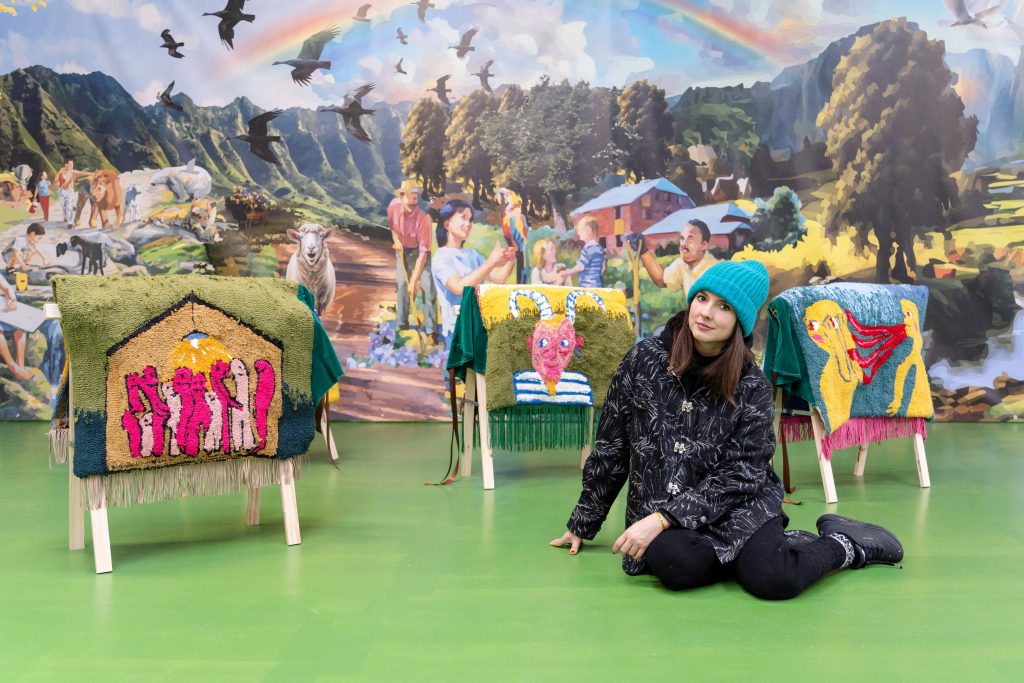
Elen Braga is known for her multidisciplinary and conceptually rich approach, encompassing installation, sculpture, video, textile and performance. Her work delves into themes such as strength, power dynamics, ambition and resilience, blending personal experiences and local narratives with universal themes and current events. Drawing inspiration from mythology, mass culture, folklore, religion and cultural traditions from both Belgium and Brazil, Braga explores how these continue to shape our daily actions and beliefs. At times, she reinterprets historical events as acts of resistance against official narratives. The artist is particularly intrigued by the paradoxes and ambiguities that emerge in her work, always aiming to spark a dialogue.

Braga often draws on her own life and experiences — such as surviving a childhood bus accident — to create intimate connections between the personal and the political, or even the collective. Her work is usually deeply attuned to the context of the locations where it is displayed and is frequently presented in the public space.
The artist works with unconventional materials such as textiles (including hand-tufted tapestries), ceramics, metal, language and even her own body. For Braga, the process of creation is nearly as significant as the outcome: a ritual shaped by dedication, perseverance and self-imposed challenges. Physical exertion plays a vital role in that, as she frequently explores the physical and mental limits of her body and integrates these into her work. A notable example is her monumental tapestry “Elen ou Hubris” (2020), which measured 24 metres in length, weighed 200 kilograms and was displayed for just five hours at the triumphal arch of the Cinquantenaire in Brussels. Conceptually, the piece explored the tension between ambition and overconfidence (hubris), connecting mythological and biblical narratives with personal reflections on pride and discipline. The work took nearly two years to complete.
For an earlier artwork, “Tão quente que era que pouco mais era morte” (“So Hot That a Degree More Would Mean Death”) (2015), Braga travelled to Death Valley in the United States, where she performed with a structure of twelve aluminium plates, inscribed with her interpretations of passages from Dante’s Inferno. This performance underscored her ongoing fascination with the duality of human strength and fragility.
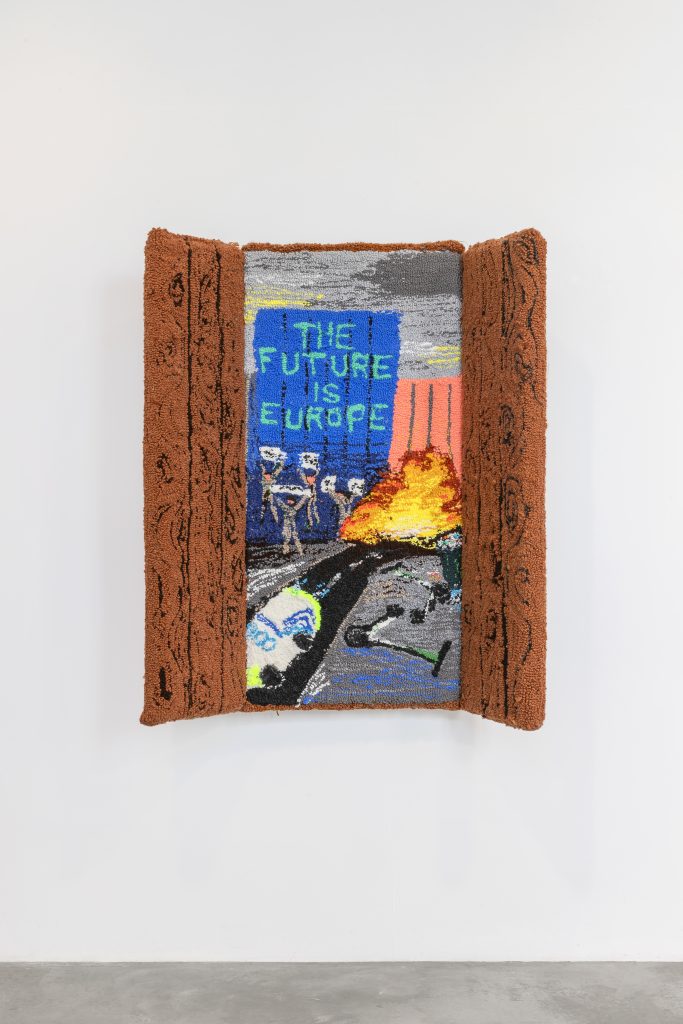
For a recent exhibition at Wouters Gallery, Braga explored the increasingly blurred boundaries between public and private spheres. Translating the concepts of a café and a love hotel into textile installations, she questioned the consumption of love in a digital age.
Elen Braga was born in 1984 in Maranhão, Brazil, into a family of very modest means. Her mother’s work with textiles profoundly influenced her understanding of how craft and identity can intersect in meaningful ways. Raised in a strict religious environment, Braga even gained a degree of recognition as a gospel singer in Brazil. As a child, she also participated in beauty pageants, an intriguing contrast to her religious upbringing, which discouraged overt displays of vanity. Although religion initially provided her with a sense of structure and security, Braga began questioning her beliefs as a teenager. Through art, she found a new way to make sense of the world and express herself. Her first experiments in performance art emerged from a desire to push boundaries — both physical and conceptual. The techniques she developed as a gospel singer later proved invaluable in her performances.
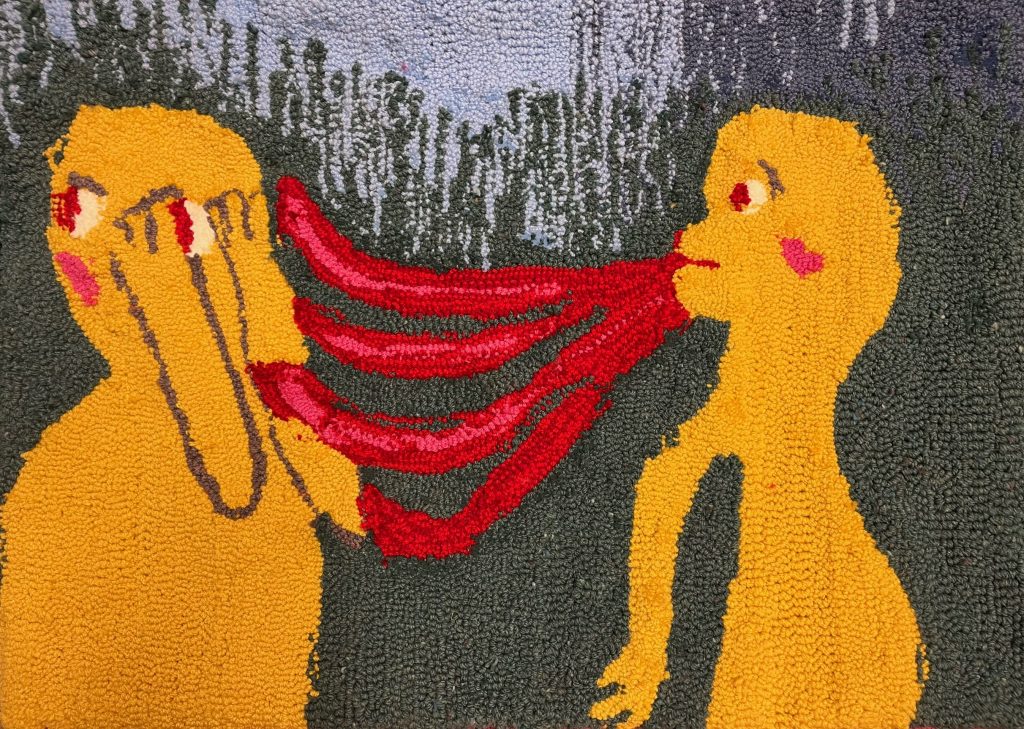
Since 2016, Braga has been based in Belgium. In 2018, she completed a post-master’s degree at a·pass (Advanced Performance and Scenography Studies) in Brussels. She has participated in several residency programmes, including MORPHO, Central Saint Martins and Buitenplaats Brienenoord. Her work was exhibited at institutions such as WIELS, M HKA and Centre Pompidou-Kanal in Brussels and was recently part of a group show at Mu.ZEE in Ostend. Until the end of January, her work will also be on view at CC Strombeek. In 2025, her first monograph will be published by MER Books.
The work of Elen Braga’s will be featured in the New Art Section at Art Rotterdam, presented by Wouters Gallery from Brussels.
Written by Flor Linckens
In conversation with Diego Diez about his gallery, ambitions and presentation at Art Rotterdam
Diez Gallery participates in Art Rotterdam for the second time. The young Amsterdam gallery is making a name for itself with its program and daring presentations at major international fairs. This year, Diez Gallery is part of the Main Section. We spoke with founder Diego Diez about his gallery, his ambitions, and his plans for the upcoming edition of Art Rotterdam.
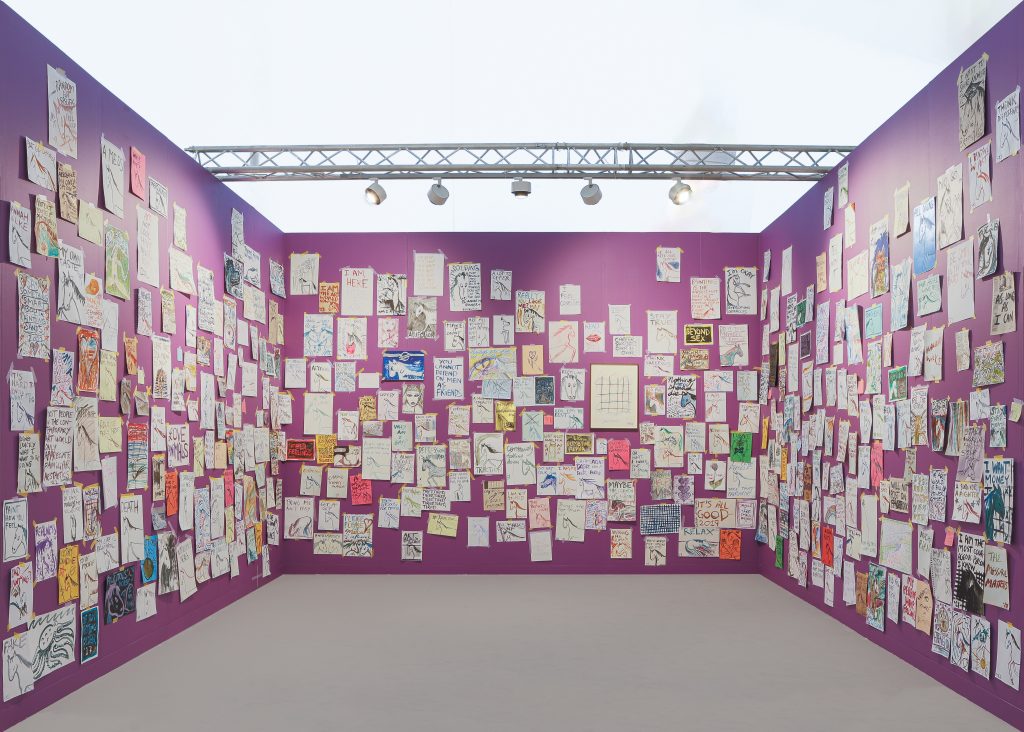
“We will soon celebrate our third anniversary,” says Diego Diez in the back room of his gallery in Amsterdam West. “I saw opportunities for my gallery because there wasn’t a gallery in Amsterdam with the same ambition or projects that I want to show in my gallery.” In a relatively short time, he managed to build a reputation—not so much in the Netherlands, as Diez mainly programs with artists who are more renowned abroad.
The Spanish Rietveld alumnus has participated in prestigious fairs such as Frieze, Liste, and ARCO. There, he stood out with bold presentations. For example, with Sands Murray-Wassink, he showed a selection of 365 drawings in his booth and captured attention; at Liste with Ian Waelder’s presentation, incorporating an architectural intervention to transform it into a small museum exhibit.
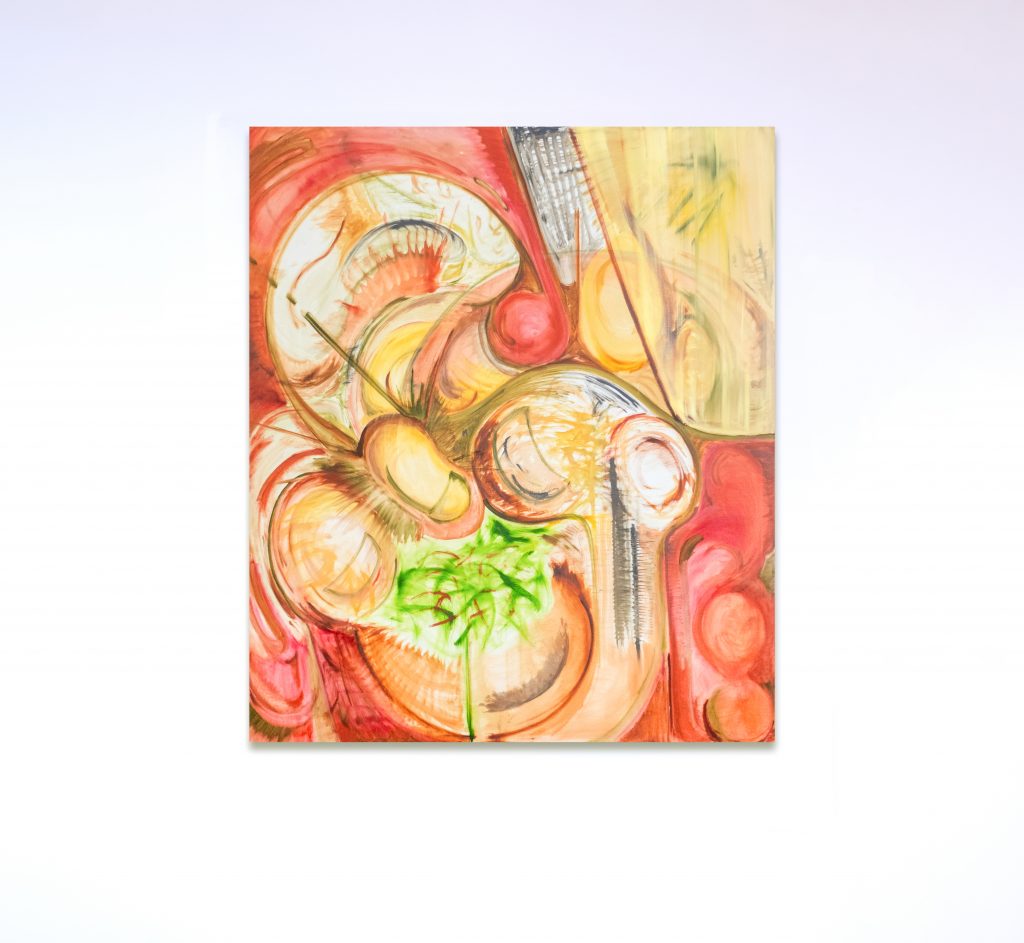
Money or financial gain is not the main focus for Diez, who articulates his plans with great clarity. “The art fairs I do and the steps I take need to serve a purpose. Doing an art fair just for the sake of it is simply a waste of time and energy.” Diez’s goal is to increase the visibility of his gallery and place works in major private or public collections.
A Leap of Faith
Art Rotterdam is scheduled for late March. While Diez had a booth in the New Art Section last year, this time he will participate in the Main Section. Because the previous edition was commercially successful—Diez sold all the works he brought—he is excited to return to Rotterdam and continue to show the different aspects of his program from the main section.
“I am not yet well-known among a larger group of collectors, curators, and corporate collections in The Netherlands. My goal is to show my commitment to this scene, city, and country and to demonstrate that I am truly convinced that Amsterdam is a good place for my gallery. For that, I want to show my vision and the vision of my artists to the local audience. Art Rotterdam is the best place to gain that recognition. That’s why I decided to take a leap of faith and participate in the Main Section this year.”
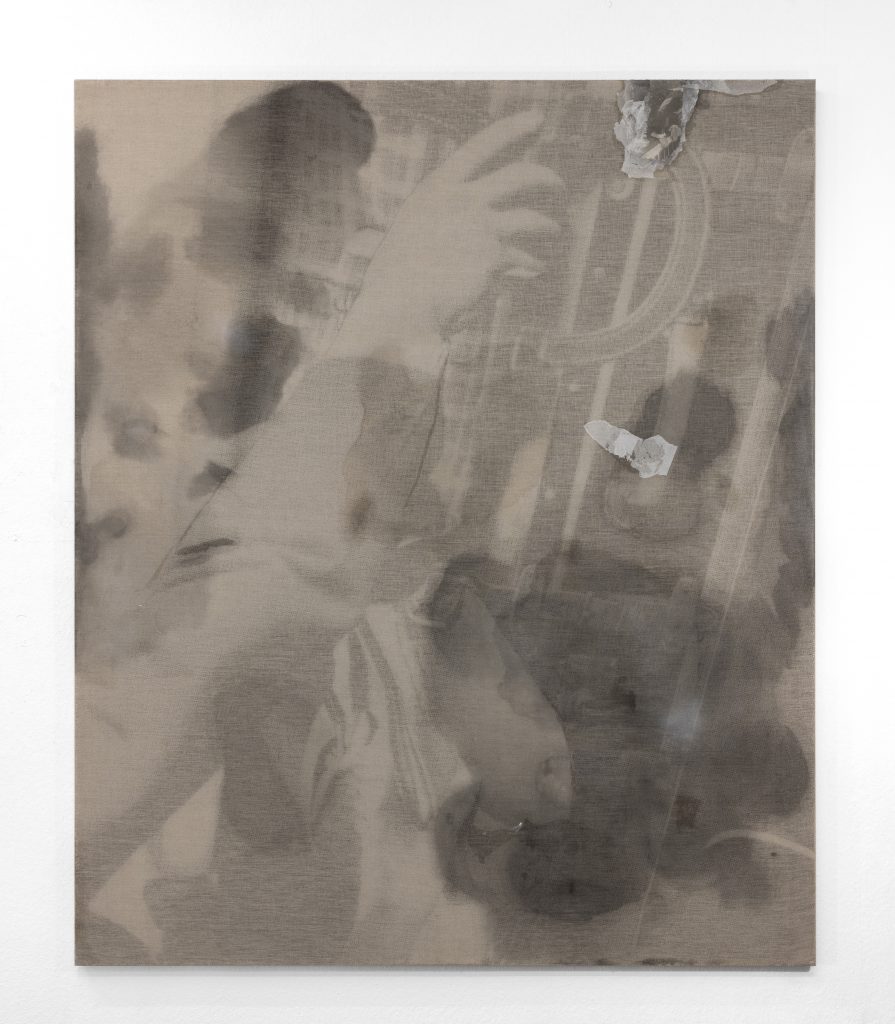
To make his plan succeed, Diez aims to secure the best work from his best artists for Art Rotterdam. This might seem obvious, but for instance, Ian Waelder has a solo exhibition at Carlier | Gebauer in Berlin just before the fair. Securing new work requires some persuasion on Diez’s part. “I approach my artists and explain the importance of this step for me. I need to show people in the Netherlands that I can bring the best of one of my most important artists. Most of the works I receive will be new works made specifically for the fair.”
Tilde
Diez’s approach to his craft stems from his previous role as the leader of the non-profit art space Tilde, which he ran from 2019 to 2022. For his projects, he showed well-known names such as Francisco de Goya y Lucientes, Laure Prouvost, and Moyra Davey. “More is possible when you have a non-profit space instead of a gallery, even with well-known artists, as there are no conflicting commercial interests,” Diez explains. At the same time, it allowed him to build a vast network of artists and curators.
Tilde was housed in Diez’s two-room apartment in Amsterdam. This meant that collaborations were highly personal, with ongoing consultations with artists that, metaphorically speaking, began at breakfast. “All the artists I work with are passionate about art, its creation, and art history. The work I show must have a certain political or social relevance or a connection to art history.”
Diez was inspired to adopt this organic way of working by his friend Marja Bloem, the partner of the late Seth Siegelaub, one of the key figures in early conceptual art. Siegelaub had a gallery in New York in the late 1960s that stood out for its groundbreaking presentation methods. The 2015 retrospective on Siegelaub at the Stedelijk Museum was a revelation for Diez: “He did things with passion. He quickly realized that the contemporary art world wasn’t for him, so he stopped his gallery. His approach felt very natural to me, especially for work that wasn’t in vogue at the time.”
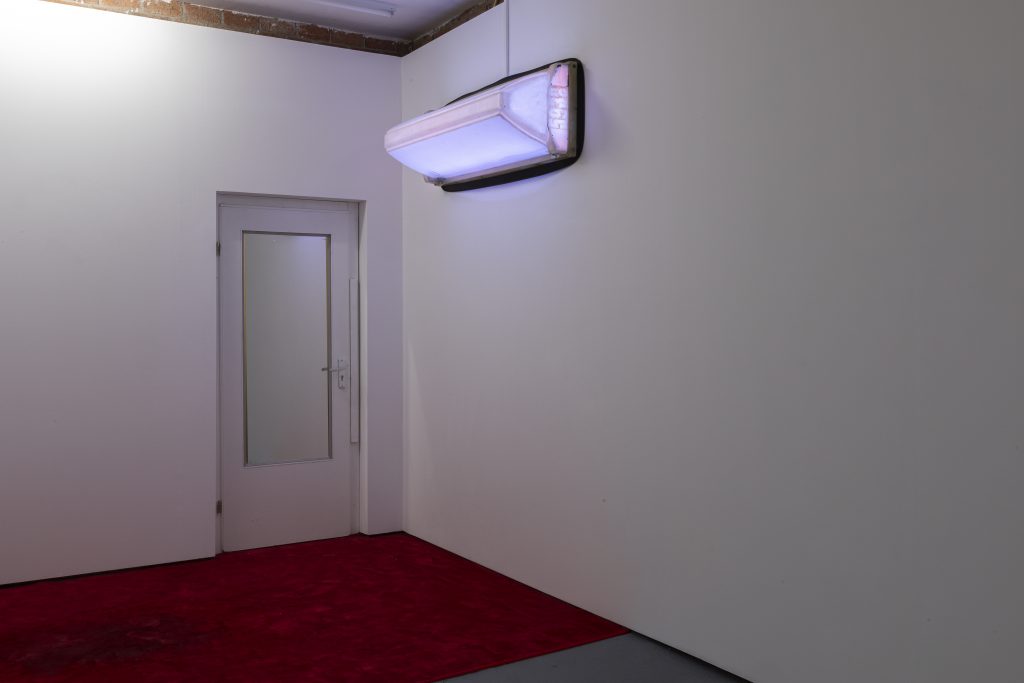
Art Rotterdam
One notable aspect of Tilde’s programming was the combination of contemporary artists with established names, such as pairing the young Nora Turato with Lilly van der Stokker. Diez plans to do something similar at Art Rotterdam. This time, there won’t be an architectural intervention but an elegant interplay of high-quality secondary market works, sourced together with Paul van Esch, and contemporary pieces by Ian Waelder, Jessica Wilson or Rasoul Ashtary. Diez plans to group them around three major themes in art history: history and identity, portraiture, and abstraction.
“Because of the importance of art history for my artists , it’s very good to place them in context. Many people don’t know my artists yet because they don’t exhibit in the Netherlands. That’s why I’m showing them alongside an established name.”
Diez can already reveal a glimpse: for the theme of history, he plans to present a work by Anselm Kiefer, who will have exhibitions at both the Stedelijk Museum and the Van Gogh Museum at that time, alongside works by Ian Waelder.
Written by Wouter van den Eijkel
Rotterdam Art Week takes place at the same time as Art Rotterdam; from 26 to 30 March 2025, Rotterdam will be all about art. At 50 locations throughout the city, you will discover fairs, exhibitions, open studios, tours, artist talks and more. From sensational openings to surprising pop-up shows, art can be seen, experienced and enjoyed everywhere for five days.
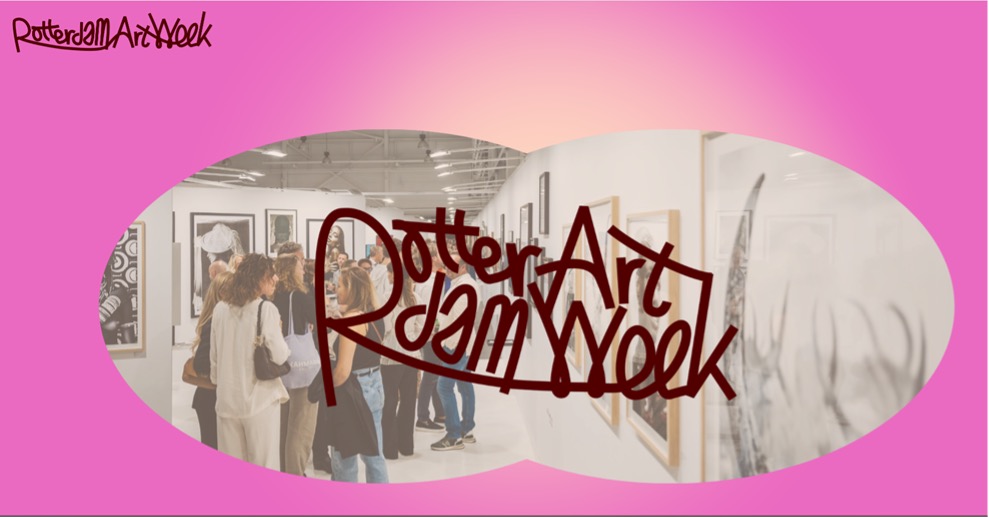
For the complete Rotterdam Art Week programming: www.rotterdamartweek.nl/programma
Fons Hof, Director Art Rotterdam
“The first edition at the new location Rotterdam Ahoy will be a special experience for international collectors, art professionals, and art enthusiasts. The fair will feature a grid of galleries interspersed with large curated spaces for video, sculpture, installations and performance. Here galleries can showcase their most daring and outspoken artists. In addition, Prospects, the Mondriaan Fund exhibition for emerging talent, will return in an extra large format. This combination creates a rich, diverse, and inspiring visitor experience, ensuring that Art Rotterdam remains future-proof.”
Edo Dijksterhuis in Dutch newspaper Het Parool, February 1, 2024
The fact that the Prospects exhibition of the Mondriaan Fund could no longer be housed at Art Rotterdam, prompted the entire fair to move to the new venue Rotterdam Ahoy.
A nice side effect of this solidarity action, is that Art Rotterdam can bring back much beloved sections from the past 25 years that were lost due to a lack of space, such as Sculpture Park, Intersections and of course the Projections video section. Something to look forward to.”
Art Rotterdam in Rotterdam Ahoy

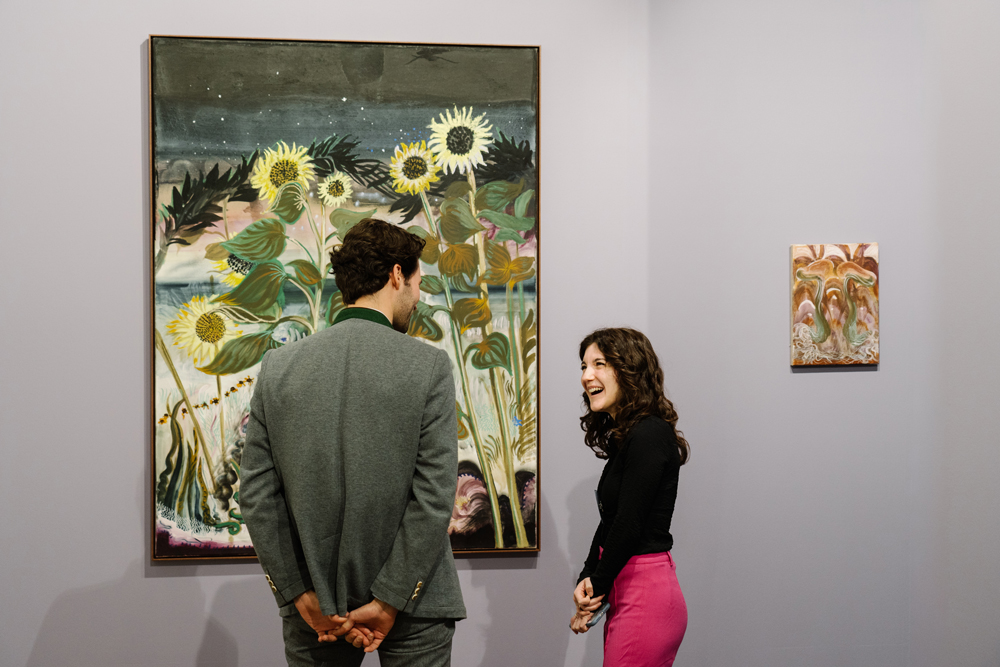
Talk hosted by Art Rotterdam – ‘The Influence of Digital Technology on Architecture, Fashion, Art and Design’
Thursday February 1, 17.00 – 18.00 hrs
Location: Reflections Room, on the first floor, next to booth 30
Four experts in the fields of architecture (Aric Chen, director of Nieuwe Instituut), art (Nieck de Bruijn, founding director of Upstream Gallery), fashion (Margreeth Olsthoorn, owner of her eponymous fashion store, curator and stylist), and design (Audrey Jane, interdisciplinary designer using analogue and digital methods) will share their perspectives on this issue in a panel discussion moderated by art historian Manuela Klerkx. Note: This is an English spoken event.
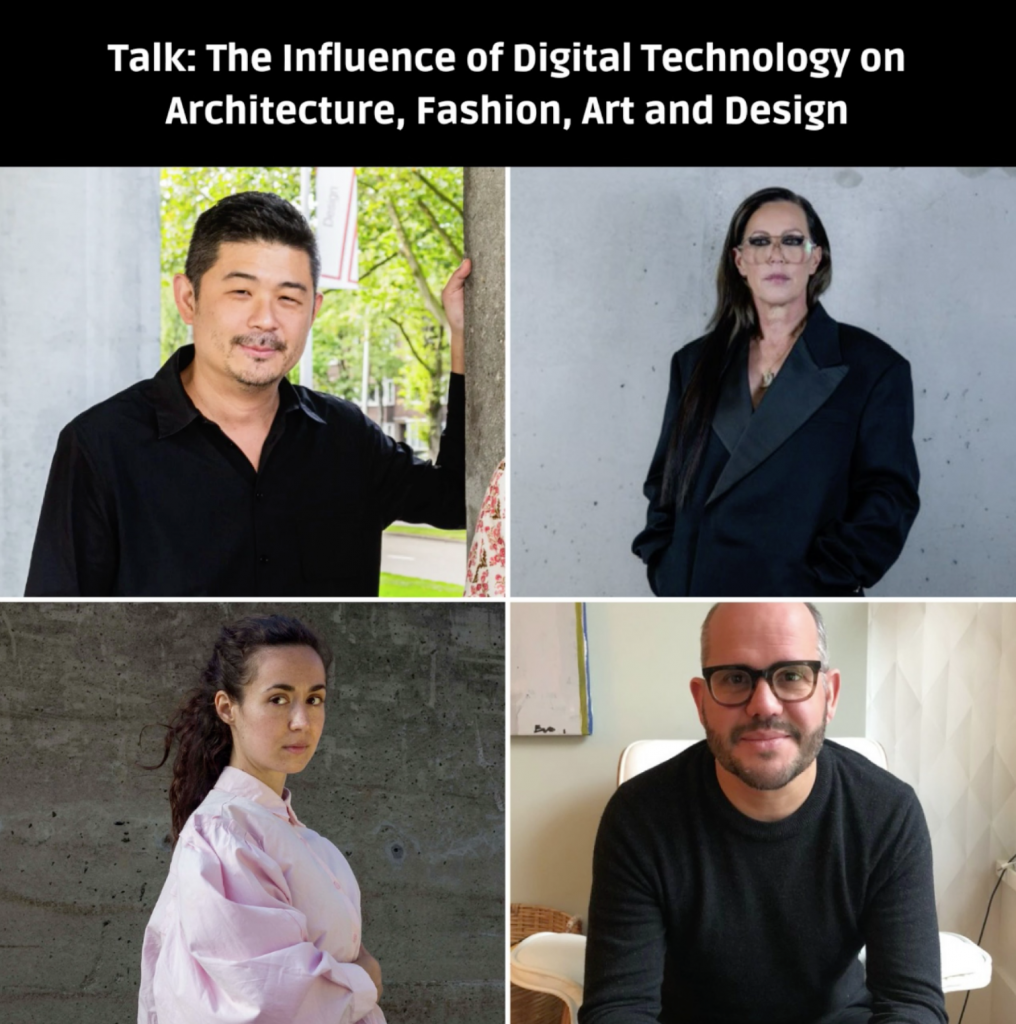
Talk hosted by BK-Information – ‘Marilyn Douala Bell: The Art Practice and the Practice of Public Art in Douala, Cameroon’
Sunday February 4, 11.30 – 12.30 hrs
Location: Reflections Room, on the first floor, next to booth 30
BK-Information hosts the lecture ‘The Art Practice and the Practice of Public Art in Douala, Cameroon’. In an interview with Marilyn Douala Bell, artist Liesbeth Bik will discuss Douala Bell’s role as a commissioner of exhibitions and art in the public space of the city of Douala in Cameroon. Note: This is an English spoken event.
Free guided tours with Young Collector’s Circle
Saturday February 3, 13.00 & 15.00 hrs
Sunday February 4, 13.00 & 15.00 hrs
Registration and staring point : entrance of the fair
Want to join a tour of the fair, led by a passionate art lover from the Young Collectors Circle? The Young Collectors Circle opens up the art world to art lovers with collecting ambitions. Meet other starting collectors, get acquainted with all aspects of collecting and develop your own taste and style.
For further questions, please visit the Info Desk at the entrance of the fair.
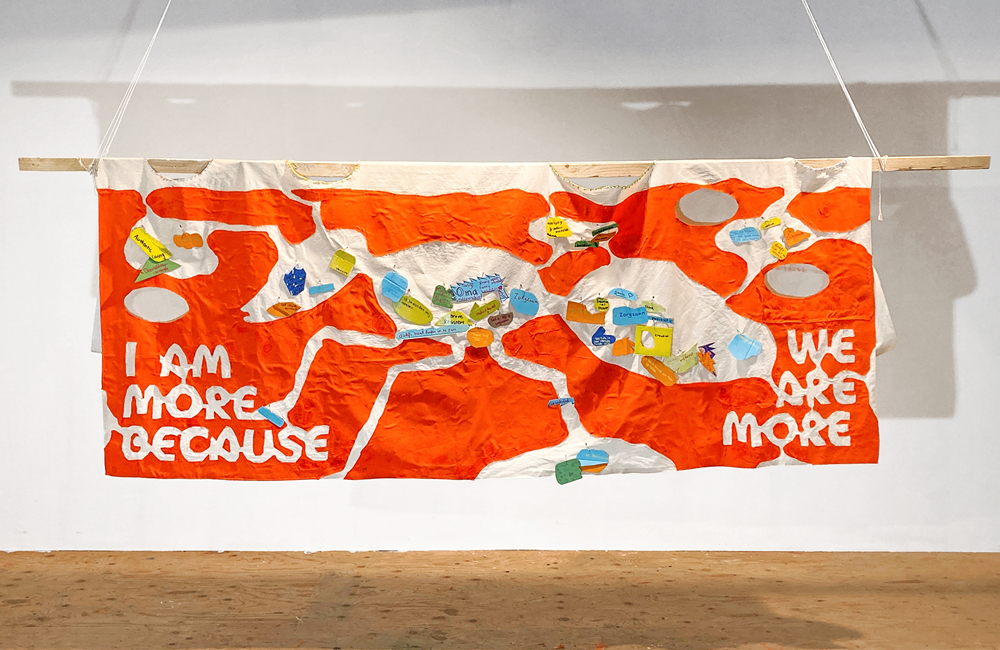
After graduating from art schools in Wuhan and London, Sun Chang (1994) attended ‘The Dirty Art Appartment’ course at the Sandberg Institute in Amsterdam from 2017-2019. Rather than training artists to practise a craft, it invites them to research our everyday social dynamics and the meanings we assign to social roles. Chang therefore describes herself as a ‘community-based and social artist’. In 2020, she initiated to M•Others (2020-present), an exploration of what motherhood means through interviews, discussions and workshops. In doing so, the artist builds a community that anyone can join. At ‘Prospects’ at Art Rotterdam, she gives insight into her process and shows a recent collaborative artwork.
The idea for the to M•Others project (2020-present) emerged during the covid pandemic. Chang shares: “Lockdown made another thing apparent: much of the work around the house is done by women. This is no news, but it made clear that even when everyone is at home, most chores still end up on the plates of women. Gender plays a role in the home. This was the starting point of my project to M•Others, in which I examine M(other)ing: mothering, taking care of another, the home, and oneself. I started examining motherhood as an action, not as a state of being. In the end motherhood, the act of mothering, is a sort of taking care of one another that can be performed by anyone, regardless of gender identity.” The artist thus uses a broad definition of motherhood, as ‘caring for another’, to include fathers, people without children and queers.

Through dinners, letters, pamphlets, interviews, discussions and collective design workshops, Chang explores what motherhood entails. One example is Sisther-Hood (2023), a large canvas designed with mothers from the Bijlmer and cardboard tags written by girls from womxn’s Mill neighbourhood. This textile work acts as a manifesto with the words ‘I am more because we are more’. The ‘I’ and ‘we’ are connected like veins of life. In the spirit of: ‘another’s beauty and strength does not mean the absence of your own.’ This project was organised during International Women’s Day together with Buurtzus. The children and adults reflected on their female role models and women/girl power in others and themselves. In addition, participants created spirit masks, inspired by a hybrid creature from Greek mythology, to represent symbols of domesticity and threats towards women.

At Prospects, the artist shows this 3-metre-long cloth with an ant-shaped anthill, in response to the question of which animal best represents motherhood. According to Chang, the ant is like a cloak that radiates the strength and connection of its creators. In times when we risk losing sight of connection, Chang uses her artistry to connect people of diverse cultural backgrounds and ages. In her words, “In the end, everyone can be a mother, regardless of gender or sex. M(other)ing [ed. mothering] is a verb, an intention.” As such, her art practices contribute to emancipation, resilience and self-awareness.
Sun Chang (1994) is a social artist, independent publisher and educational designer based in Amsterdam. From 2012 to 2019, she pursued art studies in Wuhan, Beijing, New York, London and Amsterdam. Chang is artistic director of to M-Others and co-founder of Lost Dad Publishing. She was granted several residencies, including from Guangdong Times Museum (2022-2023), Witte Rook (2022) and CBK Zuidoost (2021).
Between 2022-2023, Chang received talent support from the Mondriaan Fund. Therefore, she is one of the participating artists of the ‘Prospects’ exhibition at Art Rotterdam.
Written by Pienk de Gaay Fortman